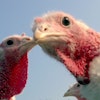
The National Poultry Specialists Association of Mexico (ANECA) is carrying out their 48th Annual Convention in Veracruz, state of Veracruz, Mexico, this week. With renewed vigor, the association has launched an excellent conference program, which attracted a wide audience. Training is one of its pillars, for an industry that provides the main animal proteins for Mexicans – eggs and chicken.
There was an outstanding discussion panel on broiler production, with very relevant presenters from Pilgrim’s Pride, Grupo Neria and Amlan. Each one with their own perspectives shared their insights that showed how the Mexican poultry industry has evolved in the last 20 to 30 years.
There are many concepts that I would like to share here. First, Mexico maintains its position as leader in broiler production growth with a compound annual growth of 3.3% since 2017, the highest among the five largest producers in the continent. From 1994 to 2022, the Mexican broiler industry has had an average of 5.93% increase in growth, although the trend is decreasing. Egg production shows an average of 3.55% in this same period, also with a decreasing trend. This implies that 63% of animal protein consumed by Mexicans comes from poultry. Mexico is very efficient in production, despite the fact that the country does not count the commodities the U.S. and Brazil have in-house.
The state of Veracruz – where the convention is being held – is now the largest producing broiler state in the country, with 26 million birds per month, outpacing many other states that have traditionally developed the industry. And there is a reason: production in the central part of Mexico, the high plain, has become more complicated because of a higher population concentration of both people and chickens. High elevation, water scarcity and so on makes production more difficult, so the coastal areas, such as the state of Veracruz, seem to be the ideal place.
Many challenges lay ahead, such as:
- the lack of personnel and professionals in the area (urbanites do not like the countryside);
- the fact that live birds commercialization continues to increase, caused by a low-income population, so attention to market channels is a must;
- the constantly increasing import of fertile eggs (23.98% from 2003 to 2022), a weak aspect of the industry;
- the growing trend of chicken imports from the U.S., Brazil, and Chile (21.63% from 1994-2022);
- biosecurity;
- animal welfare;
- food safety;
- modernization of farms – use of automation, machine learning and so on.
Despite all this – long story short – moderate but constant growth and consumption is anticipated, with a strong domestic market.
What do you think?



















